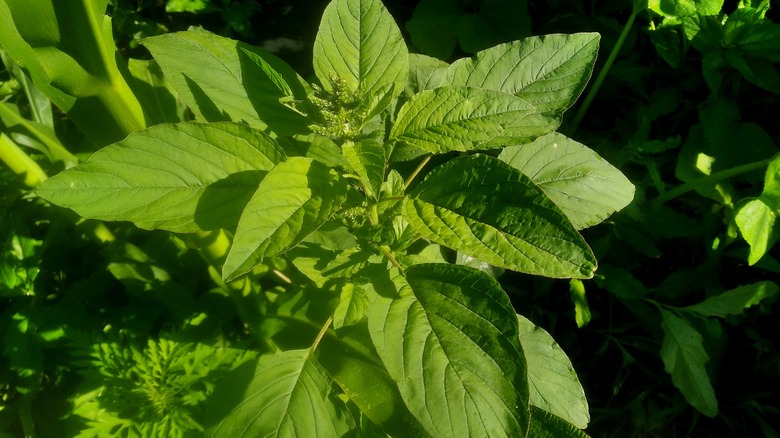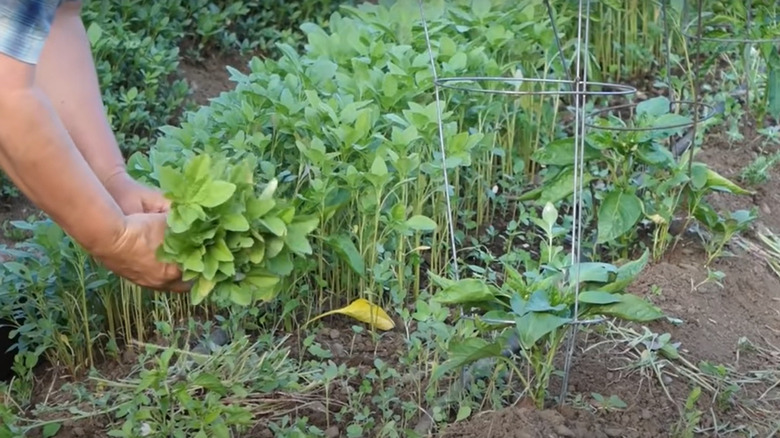The Invasive Weed You May Actually Want To Keep In Your Garden
Rampant across North American gardens, pastures, and cultivated fields, redroot pigweed (Amaranthus retroflexus) is typically regarded as an unwelcome guest due to its prolific growth. While it often grows in pastures used for feeding pigs (explaining its name), it is treated as a stubborn weed by green enthusiasts who would rather yank it than let it proliferate. However, it may be time to reconsider your stance on this hardy species.
These red-stemmed amaranth plants are common in your landscape and used as savory greens in several cuisines, especially Mexican and Indian cooking. Being edible all over, redroot is often harvested for its leaves, which taste similar to spinach, and nutty seeds that serve as delicious substitutes for cereal or are added to salads when sprouted. Rich in several vitamins and minerals, they are often consumed for medicinal purposes, such as dealing with digestive disorders or as a topical treatment for insect bites and rashes (via EatThePlanet.org).
Recognizing redroot pigweed
Given how difficult it is to differentiate redroot pigweed from related amaranth varieties, it is essential to become familiar with its telltale characteristics to appreciate its benefits. Unlike water-hemp and green pigweed, which have sparsely covered stems, rough pigweed exhibits short and dense hair growth all over its stem. Moreover, it supports a long, fleshy pink or red taproot and stout, angular, and rough light green branches that can rise between 1 and 3 feet.
In their initial growth years, redroot seedlings grow narrow, egg-shaped, dull green leaves with bright red undersides. While very little hair exists on the leaf margins, stems show a higher density, with their bases often colored red and petioles appearing purple. But as the tropical American plant matures, the leaves turn ovate and hairy with white veins underneath, while the stems grow stout, reaching a height of almost 6.5 feet. Moreover, tiny green flowers forming dense, erect spikes at the leaves' axils also blossom in the later years, giving way to fruit containing brown or black seeds notorious for their prolificity.
Benefits of cultivating redroot
Despite being shunned as a pesky invader, tall pigweed is notable for being a succulent and nutritious plant rich in calcium, iron, and vitamins A and C (via Gardening Know How). Its young, tender leaves and early shoot growth taste the best and are often eaten raw in salads. The older leaves can be steamed or sautéed to make them more edible, as they tend to lose flavor or turn bitter once matured. They can also be brewed as herbal tea to potentially relieve throat infections, ulcers, and menstrual bleeding, according to Health Benefits Times.
Furthermore, amaranth's protein-rich seeds can be roasted, popped, or ground into powder for making bread. Even its hardy stem can be boiled to make it suitable for consumption. These common weeds are packed with various minerals, including zinc, copper, and magnesium, which may help treat fever, headaches, and digestive issues. Additionally, as pigweed attracts pest eaters like ground beetles, it can be an ideal companion plant, especially for those suffering from leaf miners. It is also set to play a vital role in promoting sustainability as it can absorb and fix a higher quantity of atmospheric carbon dioxide.


